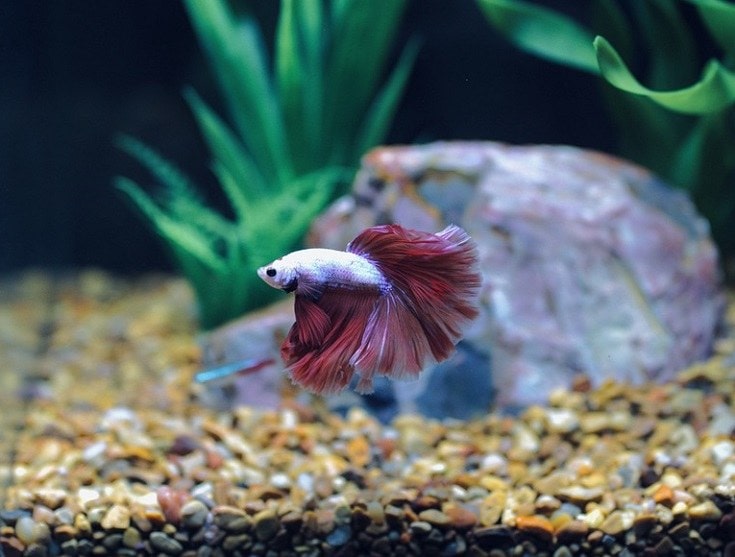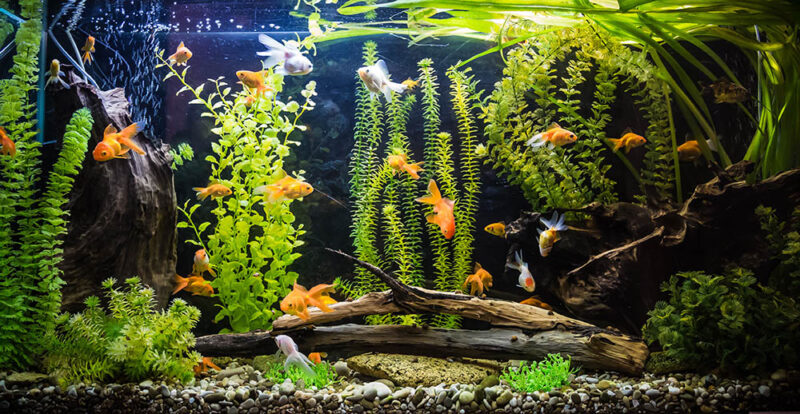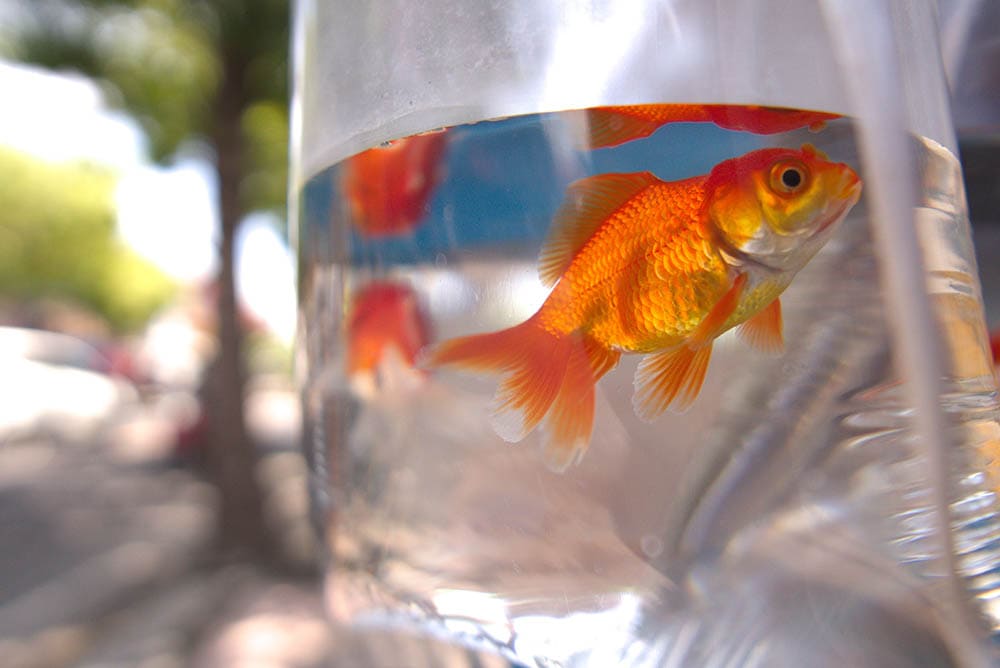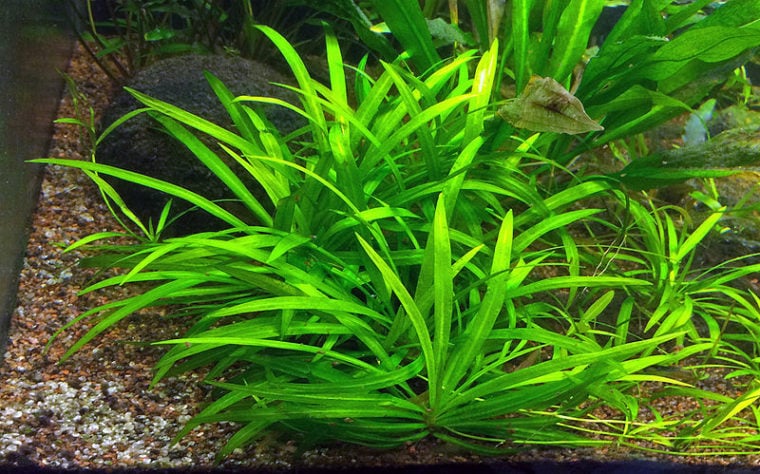
The Amazon sword (Echinodorus) is a hardy and popular aquarium plant that is ideal for beginner aquarists. You can easily grow this plant in a variety of different aquariums with different species of fish and invertebrates.
Fish seem to love the soft and large leaves which can provide coverage for them, while this plant helps to improve the water quality by absorbing nitrates that are produced from the fish’s waste.
Although the Echinodorus plants are easy to grow, care for, and remain relatively inexpensive to purchase, they still require care and maintenance so that they can grow and thrive in your aquarium. This article will give you all the tips and tricks you need to know to care for this beautiful aquatic plant.
Quick Facts About The Amazon Sword

| Family: | Alismataceae |
| Scientific Name: | Echinodorus grisebachii |
| Growth Rate: | Slow to moderate |
| Propagation: | Runners |
| Care Level: | Easy, beginner-friendly |
| Placement: | Mid-ground or background |
| Maximum Size: | 18–20 inches |
The Different Species Of Echinodorus
Interestingly, the term “Echinodorus” is used to describe the genus of an entire group of sword plants that vary in appearance and size.
This genus consists of more than 30 different species that originate from South and Central America, through to Argentina. Although there are many different types of Echinodorus, they all have similar care requirements. The type of Amazon sword you own will not influence the type of care this plant needs, but some varieties of Amazon sword can grow quite large meaning they would have a different minimum tank size than other species. Some species stay relatively small and can inhabit tanks less than 10 gallons in size.
These are the most popular types of Amazon swords that can be found in local fish stores:
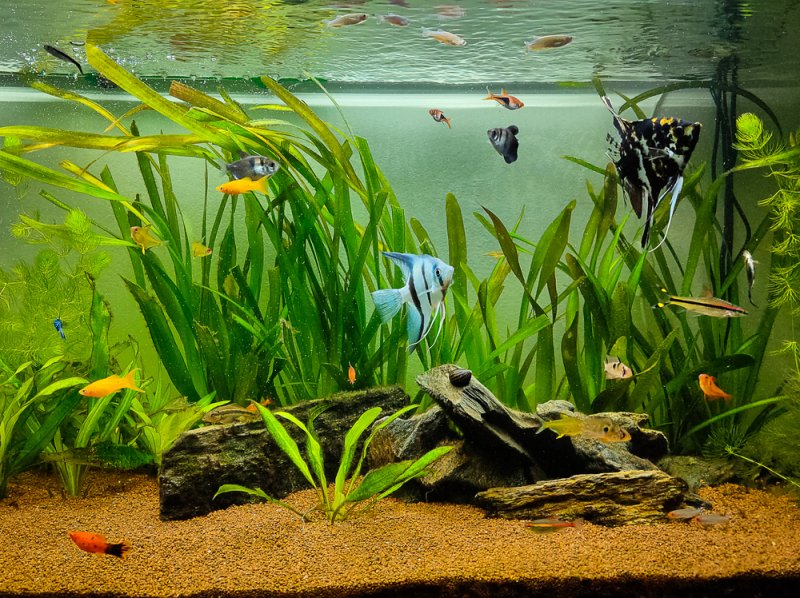
Echinodorus Appearance and Growth Rate
The Amazon sword and its varieties all have a similar appearance with vibrant dark green leaves that are shaped like a sword (hence the name). Amazon swords are a rosette-style and annual-growing plant that grow fully emerged in water. They have a strong and adaptable root system that allows them to deeply root themselves in a substrate where they absorb nutrients and fertilizers.
A typical Amazon sword has a bushy appearance with thin stems that grow from the central crown root which then leads to thicker green stems growing from the stem with long and slender leaves.
There are some varieties of Echinodorus, such as the Melon sword plant, that have rounded red and green leaves but are still considered a sword plant. The main difference between the different species of Echinodorus is the size of the plant and the texture and color of the leaves.
A plus to caring for a plant from the Echinodorus genus is that they have a slow to moderate growth rate depending on the conditions they are kept in. Most Echinodorus do not get larger than 18 inches, with the smallest size being 4 inches.
Step-By-Step Care Guide for Growing Echinodorus
1. Aquarium Size
The first step to successfully growing Amazon swords is to ensure that the aquarium you will be growing this plant has the right conditions. The dwarf chain sword can grow in a smaller aquarium under 10 gallons because it does not grow much larger than a few inches.
However, most species of Echinodorus require an aquarium of 10 to 20 gallons as a minimum. This plant grows vertically so it will do better in taller aquariums. The aquarium should be fully cycled first so that the plant does not get burned by high ammonia, nitrite, or nitrate levels.

2. Planting and Substrate
Amazon sword plants should be planted in nutrient-rich soil that contains high traces of iron which is beneficial for their growth. A few inches of substrate will suffice for the rooting of Echinodorus plants. Soils or very fine gravel seem to work better for root growth, but you can layer the top of the substrate with larger gravel to help weigh the plant down.
The entire plant should be submerged in water and the main stem should protrude from the substrate while the rhizome and roots are planted in the substrate.
3. Lighting
Echinodorus can be grown in low to moderate lighting, but it can also grow under very bright conditions. Their light tolerance is versatile, and they should receive light from the top of the aquarium instead of from a side angle. This plant should receive between 6 to 11 hours of light during the day and have a period of darkness in between.
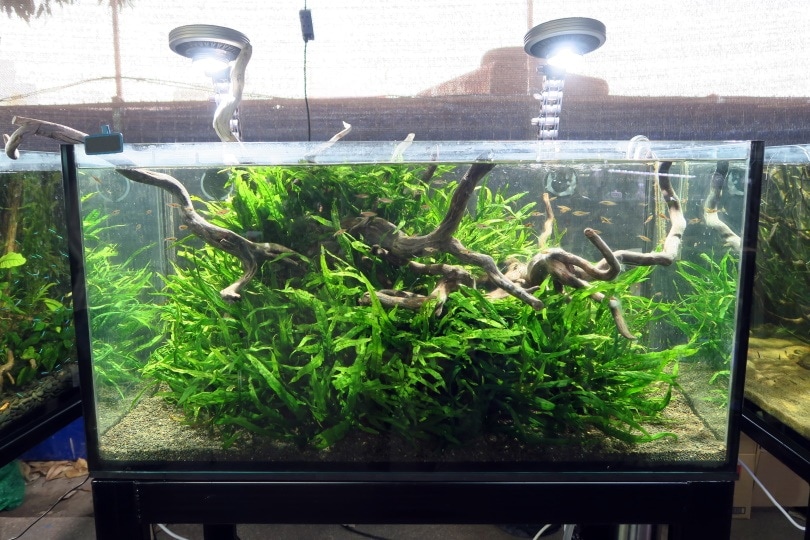
4. Water Conditions
Good water quality allows this plant to thrive. An aquarium pH of 6.5 to 7.5 is ideal for Amazon swords, but some people have also had success keeping this plant at 6.0—likely the lowest pH for Echinodorus to thrive in. The aquarium should be fully cycled first so that the plant does not get burned by high ammonia, nitrite, or nitrate levels.
You can grow Echinodorus in both tropical (heated) and temperate (cool) aquariums at a temperature between 60 to 82 degrees Fahrenheit. This genus of plants can grow in a wide range of conditions which is why it is so popular for beginners.
5. Fertilizers and CO2
Amazon swords are root feeders which means that they absorb most of the nutrients they need from the substrate they are in. Fertilizers and CO2 are not a necessity for this plant, but they can help aid in better growth and more vivid coloration. If your Amazon sword is planted in gravel that contains no nutrients, then using root tabs and other fertilizers in the substrate can help prevent this plant from developing nutrient deficiencies.

6. Propagation
The Amazon sword plant reproduces by a single long stem that has runners. These runners will then produce a new plant every few inches. Over time, this new plant will grow its root system. This plant can only reproduce and propagate when it is mature.
Summary
Echinodorus looks beautiful in aquariums and can greatly benefit the aquarium by not only improving its appearance but also the water quality. Out of all aquarium plants, you will find that sword plants are easy to care for and can thrive in nearly all aquarium environments with the right conditions and care. Most beginner aquarists start with species of Echinodorus before they move on to more delicate species of plants, which further shows how low-maintenance these plants are.
We hope that this article has helped you understand this fascinating genus of plants and how you can easily care for them in your home aquarium!
You might also be interested in: 8 Best Aquarium Stem Plants
Featured Image Credit: Echinodorus (Image Credit: Tommy Kronkvist, Wikimedia Commons CC BY-SA 3.0 Unported)




